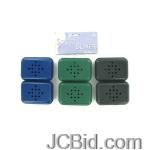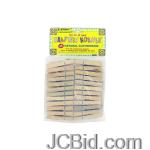
| Updated Blogs |
|
Computer Support Blog
Essensial Software for Web Based Support
HP Server and Desktop
HP ILO - Remote Tech-Support Software
More .....
|
 RSS Feed | Login
RSS Feed | Login http://www.pcakku.com
Nagelneu Laptop-Batterie, Laptop Akku online shop - pcakku.com
Lenovo ThinkPad L410 Battery
By pcakku288 at 2019-01-15 22:36:29
What questions do you have? Call my national radio show and click here to find it on your local radio station. You can listen to the Kim Komando Show on your phone, tablet or computer. From buying advice to digital life issues, click here for my free podcasts.Copyright 2018, WestStar Multimedia Entertainment. All rights reserved.Learn about all the latest technology on the Kim Komando Show, the nation's largest weekend radio talk show. Kim takes calls and dispenses advice on today's digital lifestyle, from smartphones and tablets to online privacy and data hacks. For her daily tips, free newsletters and more, visit her website at Komando.com.A single overheating laptop in checked luggage that bursts into flames on an airliner can overwhelm the fire suppression system and potentially bring down the aircraft, according to disturbing new research.
Regulators had believed that the flame-retardant gas required in airliner cargo holds could knock down single lithium battery fires, Bloomberg News reported.But tests conducted by the Federal Aviation Administration found the suppression systems can’t put out a battery fire that combines with other highly flammable material, such as the gas in an aerosol can or cosmetics.“That could then cause an issue that would compromise the aircraft,” Duane Pfund, international program coordinator at the U.S. Pipeline and Hazardous Materials Safety Administration, told an aviation safety forum in Washington on Wednesday..The research highlights the mounting risks of lithium batteries, which power everything from mobile phones to gaming devices. Bulk shipments of rechargeable lithium batteries are not permitted on passenger planes.
The FAA’s findings last year prompted the government to urge the United Nations International Civil Aviation Organization to call for a ban on electronic devices larger than a mobile phone in checked luggage. That effort fell short, Pfund said.“One way or another, we have to deal with these hazards,” said Scott Schwartz, head of the hazardous goods program at the Air Line Pilots Association, the largest pilots union in North America.The union hasn’t taken a formal position on whether there should be a ban on lithium batteries in checked bags and is seeking greater education campaigns so passengers are less likely to put spare batteries and electronics in their checked items.In June 2017, the U.S. Homeland Security Department funneled more such electronics into cargo holds amid concerns that items as small as a tablet computer could be used to conceal bombs.The agency stopped short of a threatened ban on moving the devices into the cabins, but required additional screening of electronics.
The FAA hasn’t placed any new restrictions on what passengers may pack in checked luggage.Last year, it told airlines they should conduct a safety study to determine what more they should do to limit the risks of battery fires in cargo holds.FAA tests found that anti-fire halon gas in airline cargo areas wouldn’t extinguish lithium battery fires, but it prevents them from spreading to adjacent materials.However, aerosol cans exploded in tests even after they were bathed in the gas, the FAA found.“There is the potential for the resulting event to exceed the capabilities of the airplane to cope with it,” the FAA said in a notice to airlines.Toshiba has issued a voluntary recall on potentially hazardous battery packs installed in 39 of its laptop models. According to the company, the battery packs, manufactured by Panasonic, can overheat and pose a burn and fire hazard.
- Lenovo ThinkPad T420i Battery
- Lenovo ThinkPad T410i Battery
- Lenovo ThinkPad T400s Battery
- Lenovo ThinkPad SL410 Battery
- Lenovo ThinkPad L510 Battery
- LENOVO ThinkPad L430 Battery
- Lenovo ThinkPad L410 Battery
- LENOVO ThinkPad Edge E30 Battery
- LENOVO IdeaPad Y560 Battery
- Lenovo IdeaPad Y510 Battery
- Lenovo IdeaPad Y471 Battery
- Lenovo IdeaPad Y460 Battery
- Lenovo IdeaPad U460 Battery
- Lenovo IdeaPad U165 Battery
- Lenovo IdeaPad S205 Battery
- Lenovo 3000 G450 Battery
- IBM ThinkPad T40P Battery
- lenovo IdeaPad Z570 Battery
- Lenovo IdeaPad Y710 Battery
- Lenovo IdeaPad Y550 Battery
- LENOVO IdeaPad U310 Battery
- Lenovo IdeaPad U160 Battery
The recall includes models from Toshiba’s Mini Notebook, Portégé, Satellite, Satellite Pro, and Tecra lines of PCs. Any laptop purchased between June 2011 and January 2016 could be affected.Through its Battery Replacement Program, Toshiba is offering a utility you can download and use to determine whether a recalled battery pack is inside your device. If so, the firm will replace it free of charge.If you’d rather not install the utility, you can search for the part number and serial number on the product information sticker on the bottom cover of your laptop and then input the info on Toshiba’s battery replacement page. To do a manual search, look here for the full list of numbers.Toshiba recommends that you "remove the battery pack immediately” and use the AC adapter to power your device until you receive a replacement. For more information, call 866-224-1346 to speak to Toshiba’s customer support.
Toshiba, which recently sold its consumer electronics division to Chinese appliance maker Midea, has said it will continue to honor warranties and offer repair services.A San Francisco-bound JetBlue flight departing from New York City was forced to make an emergency landing in Michigan Tuesday night after a laptop battery caught on fire, authorities said.Flight 915 from John F. Kennedy Airport was diverted "due to a lithium battery fire from a passenger's laptop," the Federal Aviation Administration said in a statement to Fox News.The flight landed at Gerald Ford International Airport in Grand Rapids, Mich., about 8 p.m. local time. JetBlue does not usually operate flights out of Ford but no injuries were reported and the aircraft was not damaged, according to the FAA.
We all know that feeling. You're walking along the street, answering a text message, when someone bumps you, and your phone goes flying onto the concrete. Will your phone hold up, or will it crack under the pressure?At Tom's Guide, we test phones to see which is the fastest, which has the best display, which has the best cameraand which has the longest battery life. But we've never tested to see which phone is the toughest. Until now.To help you avoid finding out the horrifying truth when your phone goes clattering to the ground, we tested all of the major smartphones by dropping them over the course of four rounds from 4 feet and 6 feet onto wood and concrete — and even into a toilet — to see which handset is the toughest.Good news: Chances are, your phone will survive a 6-foot fall onto wood and, if it's lucky enough to land on its edge, withstand drops onto concrete with minimal damage. Bad news: If you don't have a screen protector, there's a really good chance something's going to break.
So, what's the toughest (nonrugged) phone out there? The $500 Motorola Moto Z2 Force. While the result wasn't completely unexpected — after all, the phone has a ShatterShield display, which the company guarantees against cracks — the Moto Z2 Force survived drops from 6 feet onto concrete, with barely a scratch.Apple's least-expensive phone didn't prove very tough at all. In fact, the $399 iPhone SE was rendered unusable before all of the others. However, this was not a big surprise, as the newer iPhone 8 and iPhone X are made with much stronger glass than the iPhone SE's from 2016.Four other phones — the $999 Apple iPhone X, the $810 LG V30, the $720 Samsung Galaxy S9 and the $329 LG X Venture — made it through to, and survived, our toilet test. But even before this point, their screens were far more damaged than the Z2 Force's. Read on to see how your phone fared.
- Lenovo IdeaPad U110 Battery
- LENOVO IdeaPad S300 Battery
- Lenovo IdeaPad S100 Battery
- Lenovo IdeaPad S12 Battery
- Lenovo IdeaPad S10-3 0647-29U Battery
- Lenovo IdeaPad S9 Battery
- Lenovo G575 Battery
- lenovo G570 Battery
- Lenovo G555 Battery
- Lenovo G550 Battery
- Lenovo G470 Battery
- Lenovo BATHGT31L6 Battery
- Lenovo B550 Battery
- lenovo B470A Battery
- Lenovo B460E Battery
- Lenovo B460A Battery
- ThinkPad X230i Battery
- lenovo V570 Battery
- Lenovo ThinkPad X61 Tablet PC Battery
- Lenovo ThinkPad X61s Battery
- Lenovo ThinkPad X60 Tablet PC Battery
- Lenovo ThinkPad L420 Battery
We also purchased a second batch of these phones, and dropped them from 100 feet using a DJI Mavic Pro drone onto a plywood target set up on an asphalt parking lot. Surprisingly, some of the phones survived intact. To see which phones made it, which ones didn’t, and why this might have happened, check out this story on our sister site, LiveScience.To measure each phone's toughness, we dropped it from both and 6 feet onto wood and concrete. After each test, we recorded the damage to the phone. If a phone was rendered unusable — the screen totally shattered, for instance — then we stopped dropping it. We have much more detail on how we tested here.
For the first round, we dropped each phone, face-first, onto wood from 4 and 6 feet.The second round involved dropping the phone from a height of 4 feet onto a concrete pad. For this test, we dropped the phone first on its edge, and then on its face.For the third round, we also dropped the phone onto concrete, but this time, it was from a height of 6 feet. Here, too, we dropped it first on its edge, and finally onto its face.The final round for the surviving phones was to drop them from 4 feet into a water-filled toilet. Unused, of course.Each drop was worth a maximum of 5 points; if a phone made it through all of the rounds unscathed, it would earn 35 points. The more severe the damage per drop was, the more points were deducted. If a phone was rendered unusable after a given drop, it would earn no points, and would not undergo any subsequent test. In total, there were seven tests:
Permalink | Comments (0)
Comments
To add a comment please login by clicking here




